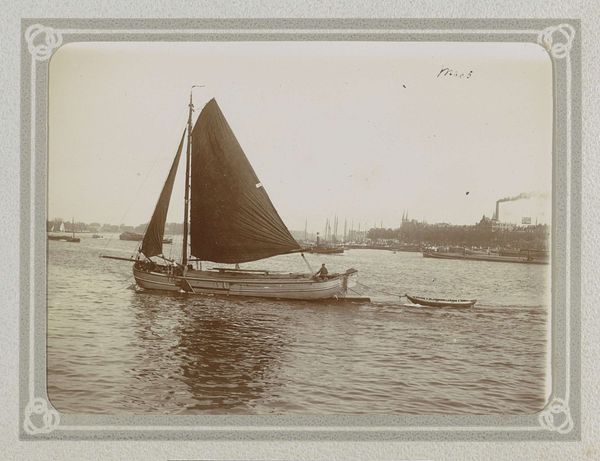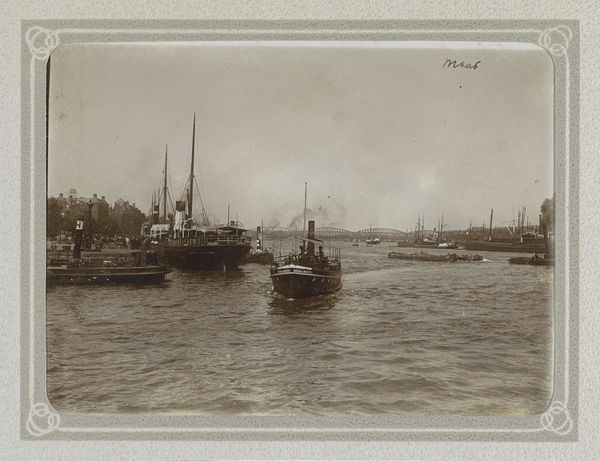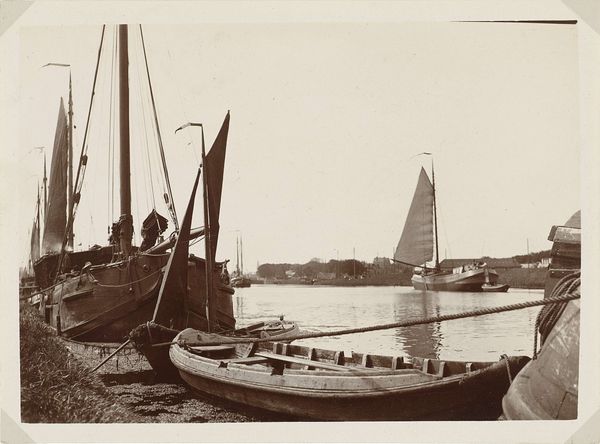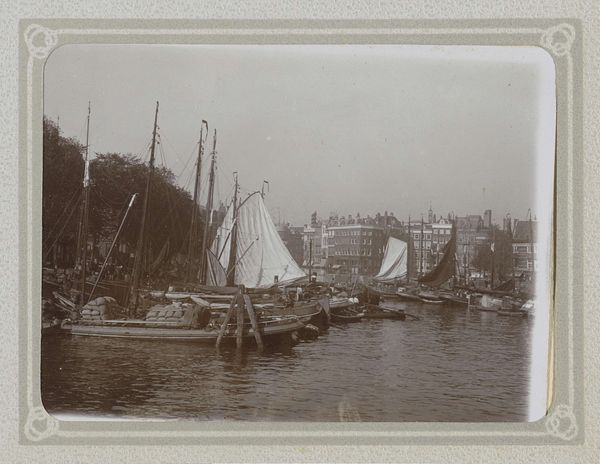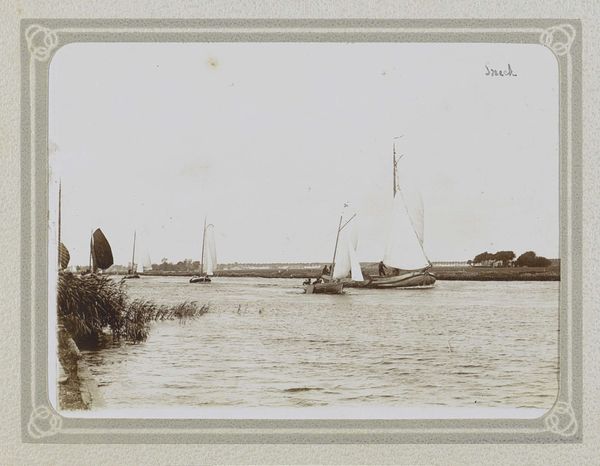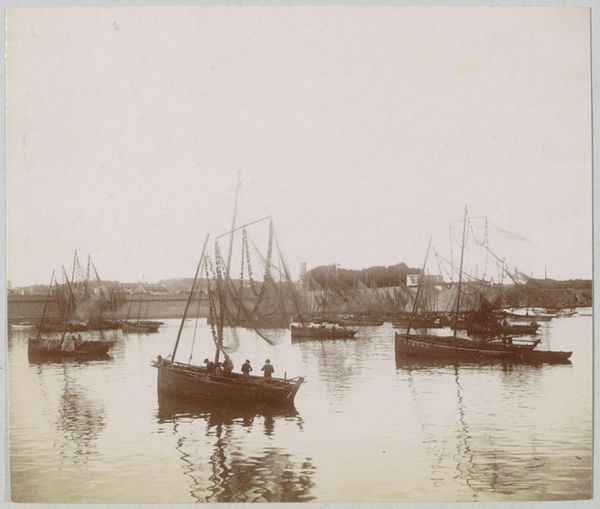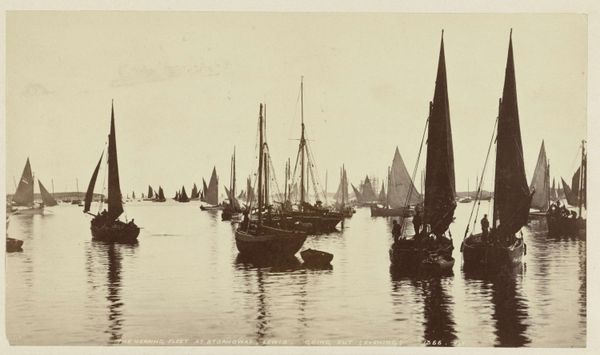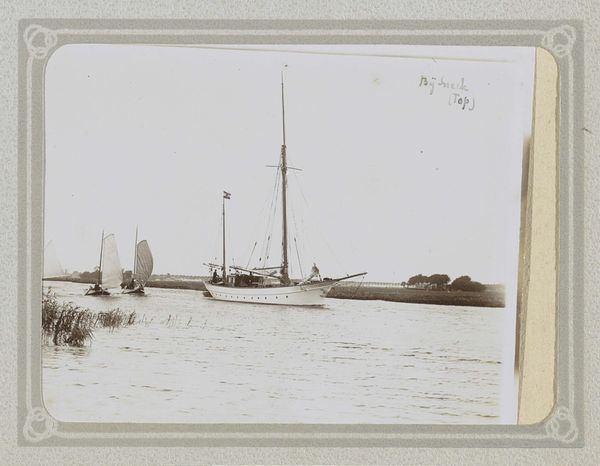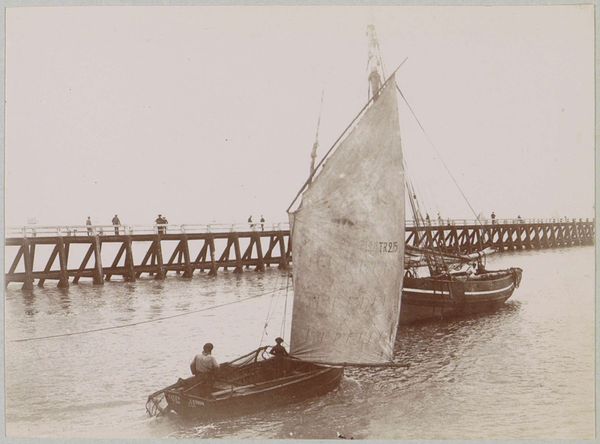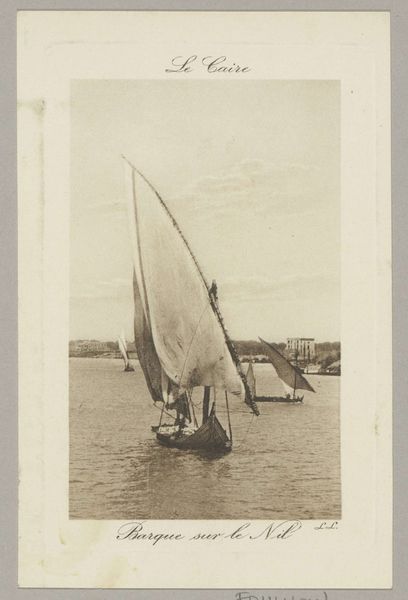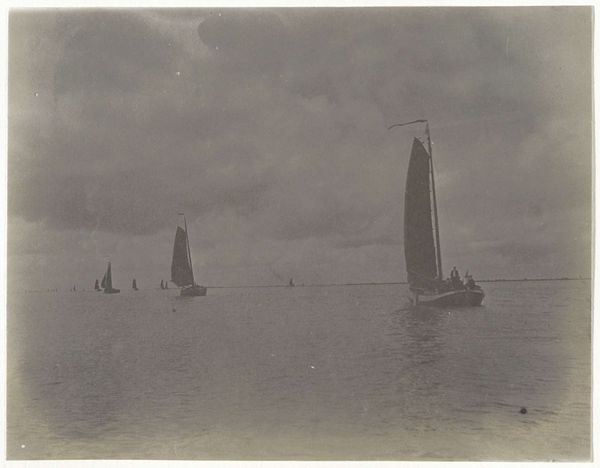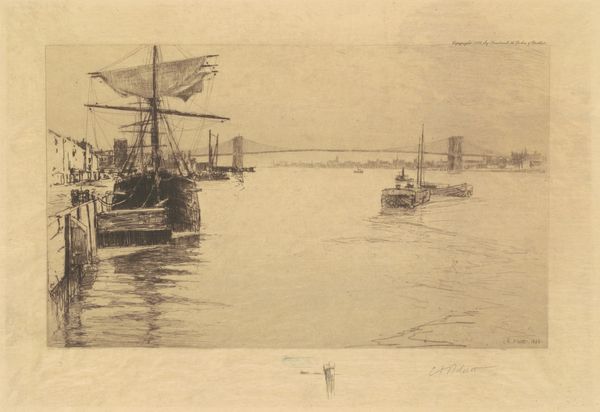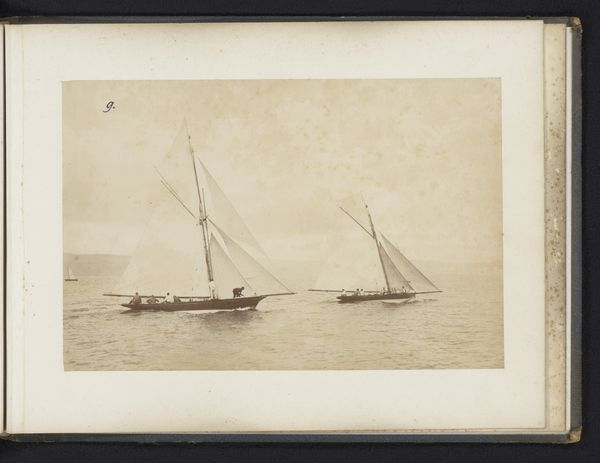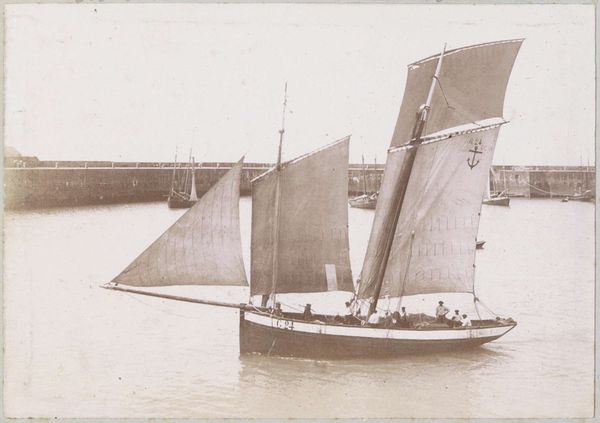
Dimensions: height 81 mm, width 110 mm
Copyright: Rijks Museum: Open Domain
Curator: I'm immediately drawn to the subdued atmosphere in this image. The monochromatic palette feels so somber and nostalgic. Editor: Indeed. We're looking at a gelatin-silver print titled "Zeilschepen op de Maas," or "Sailing Ships on the Meuse," attributed to Folkert Idzes de Jong. Its creation is estimated to be sometime between 1905 and 1907. It really captures a sense of industry, doesn't it? Curator: Absolutely. The composition directs my gaze across the water, noticing the contrast between the smaller, possibly steam-powered vessels, and the sailing ships themselves. They are potent symbols of tradition being encroached upon by modernity. You see that progression of power represented on the water. Editor: Precisely. And how the city looms in the background, emitting smoke from factories, signifies a new reality for this port city. It really reminds us that ports are central to the exchange of goods and ideas and, also unfortunately, sources of pollution. Curator: Consider how de Jong presents this river too, almost mirroring the sky in tone, blurring boundaries. Perhaps a metaphor for the fluidity of change, the uncertainty that these port cities faced as they industrialized. Water itself holds layers of symbolism; the unconscious, journeys, and cleansing all come to mind. Editor: It is intriguing how a single photographic print manages to say so much about its time. This particular photograph speaks to me about the transition between sail and steam. Also, it touches on larger shifts in economy and labor happening during this period, the kind that reshaped cities along with individual livelihoods. Curator: Right, those shifting livelihoods, caught on film. Before a complete takeover. The quiet mood gives the work added weight. Editor: And the composition creates the context that adds such historical significance. It makes me consider the future implications that this transition posed on society, on the lives of workers specifically. I also think about our role in presenting works such as these. Curator: Exactly. Visual reminders and ongoing dialogues connecting the past to the present, and urging questions for the future. Thank you. Editor: It was my pleasure.
Comments
No comments
Be the first to comment and join the conversation on the ultimate creative platform.
